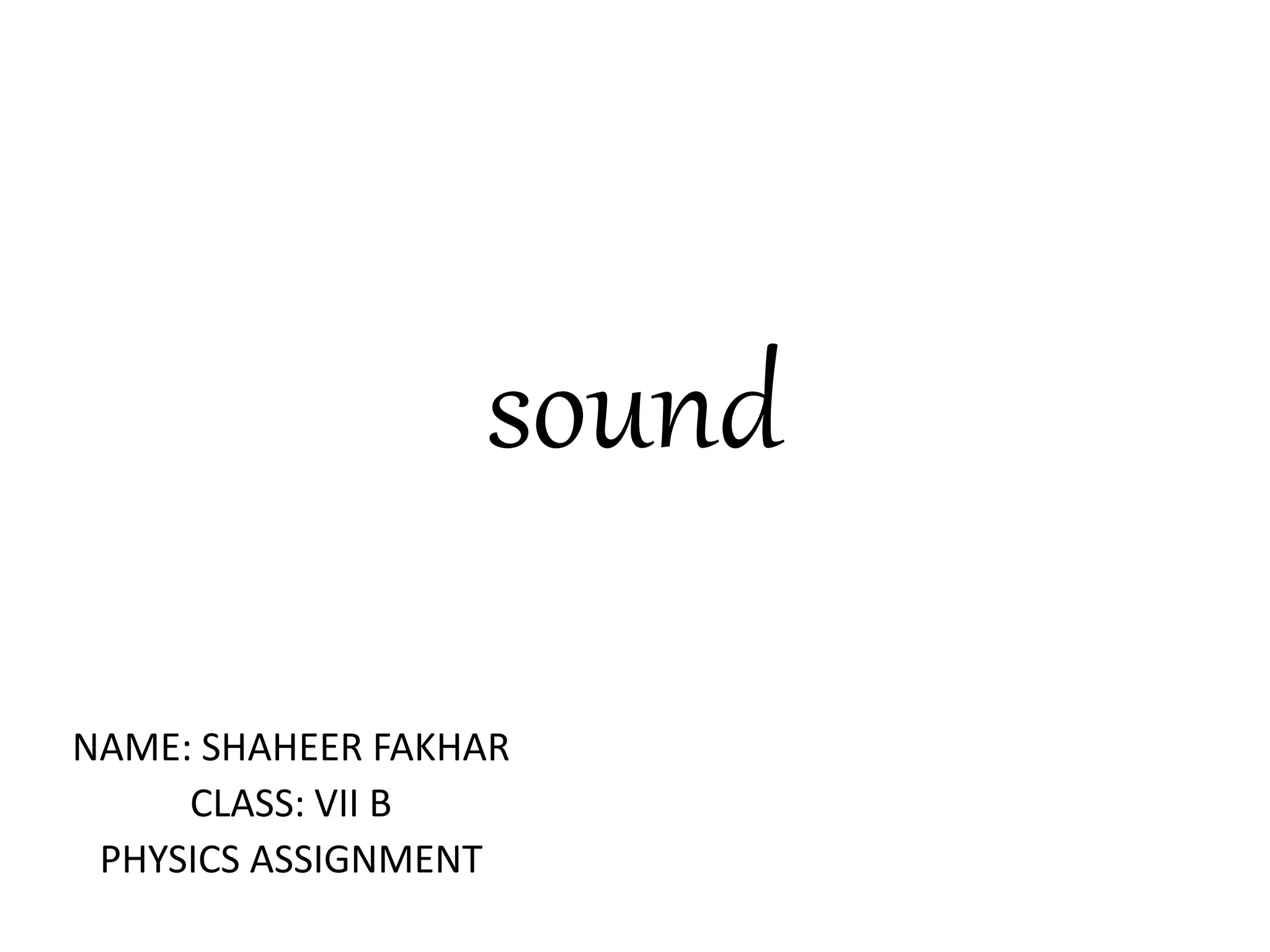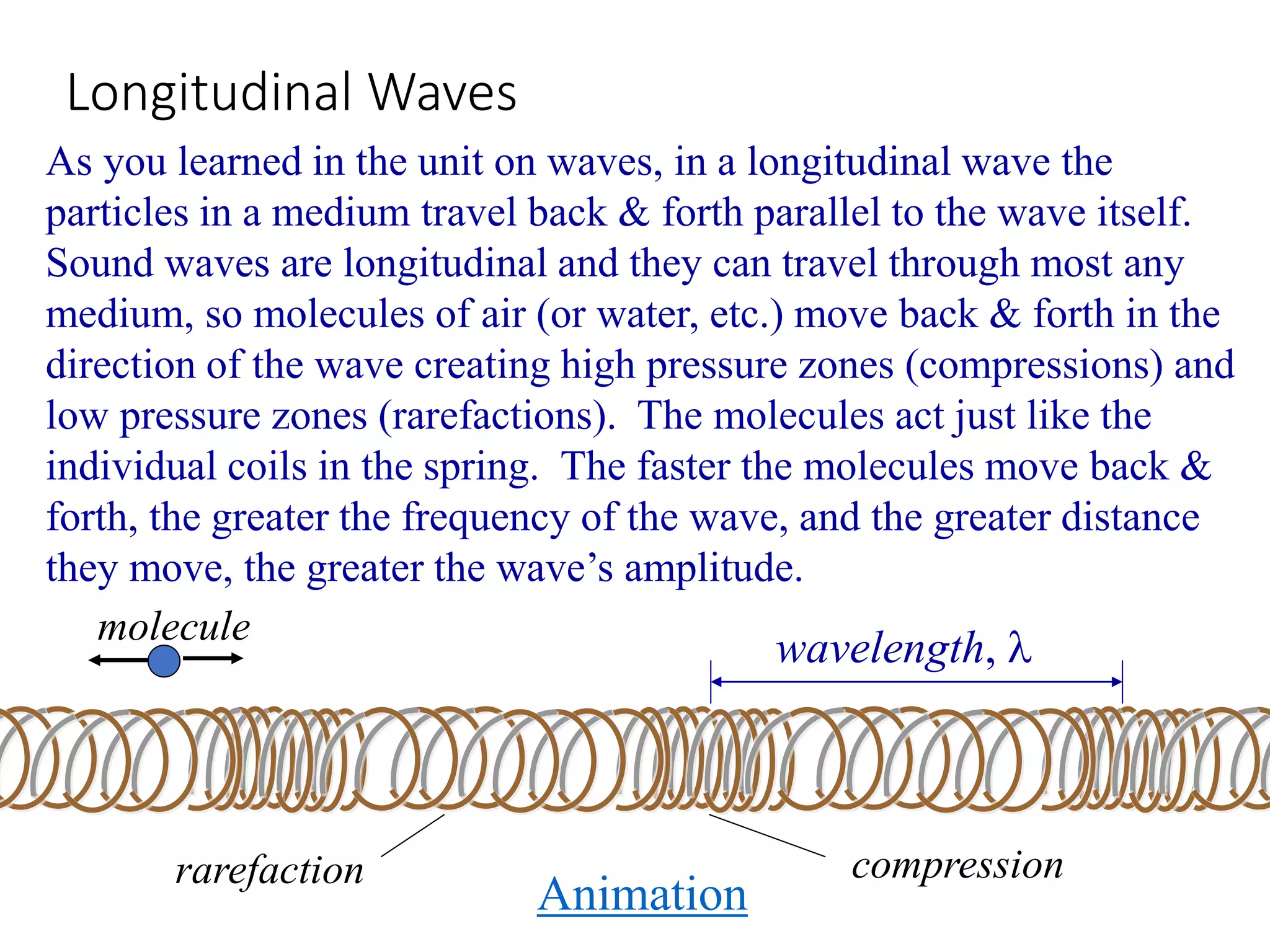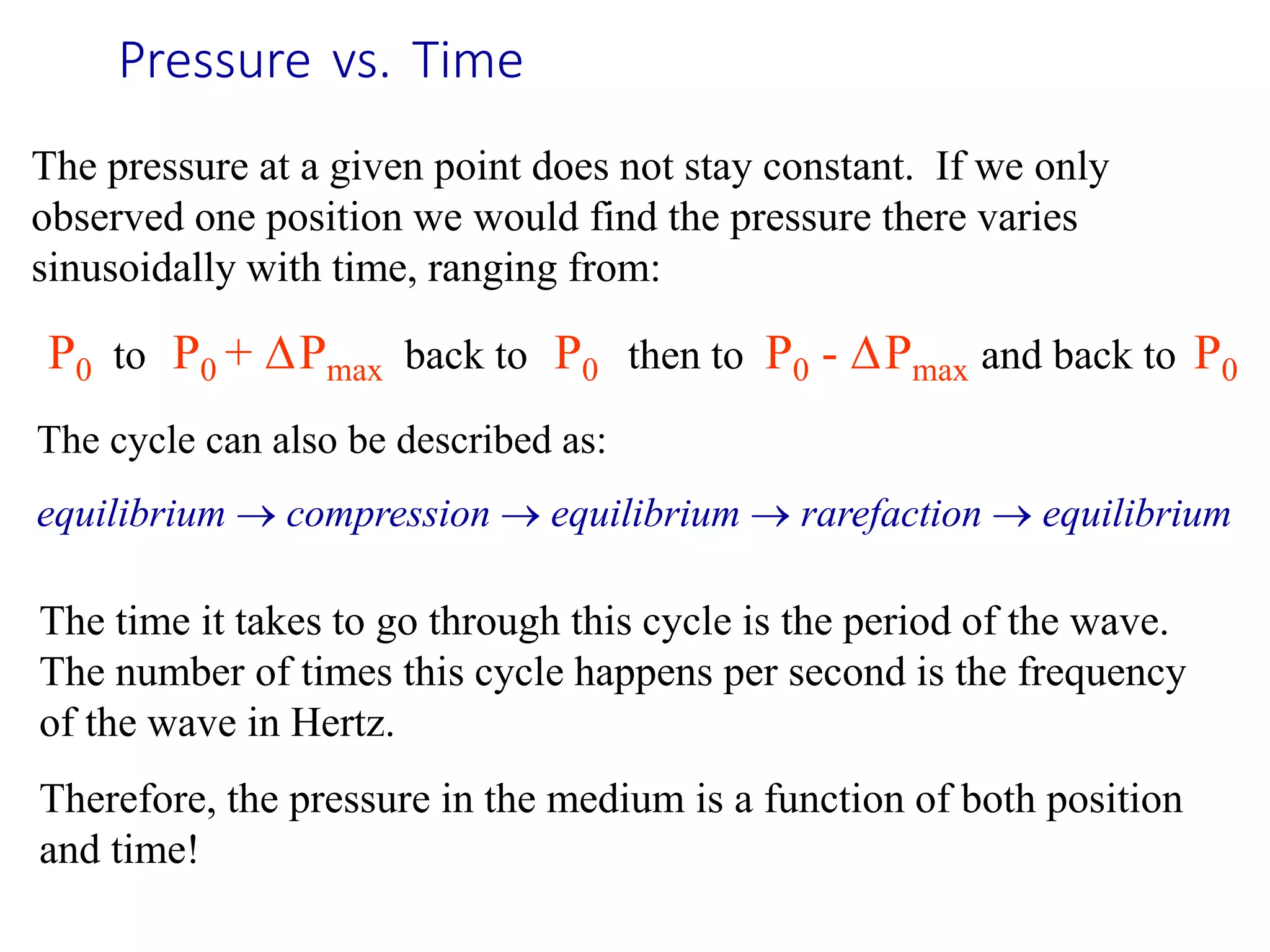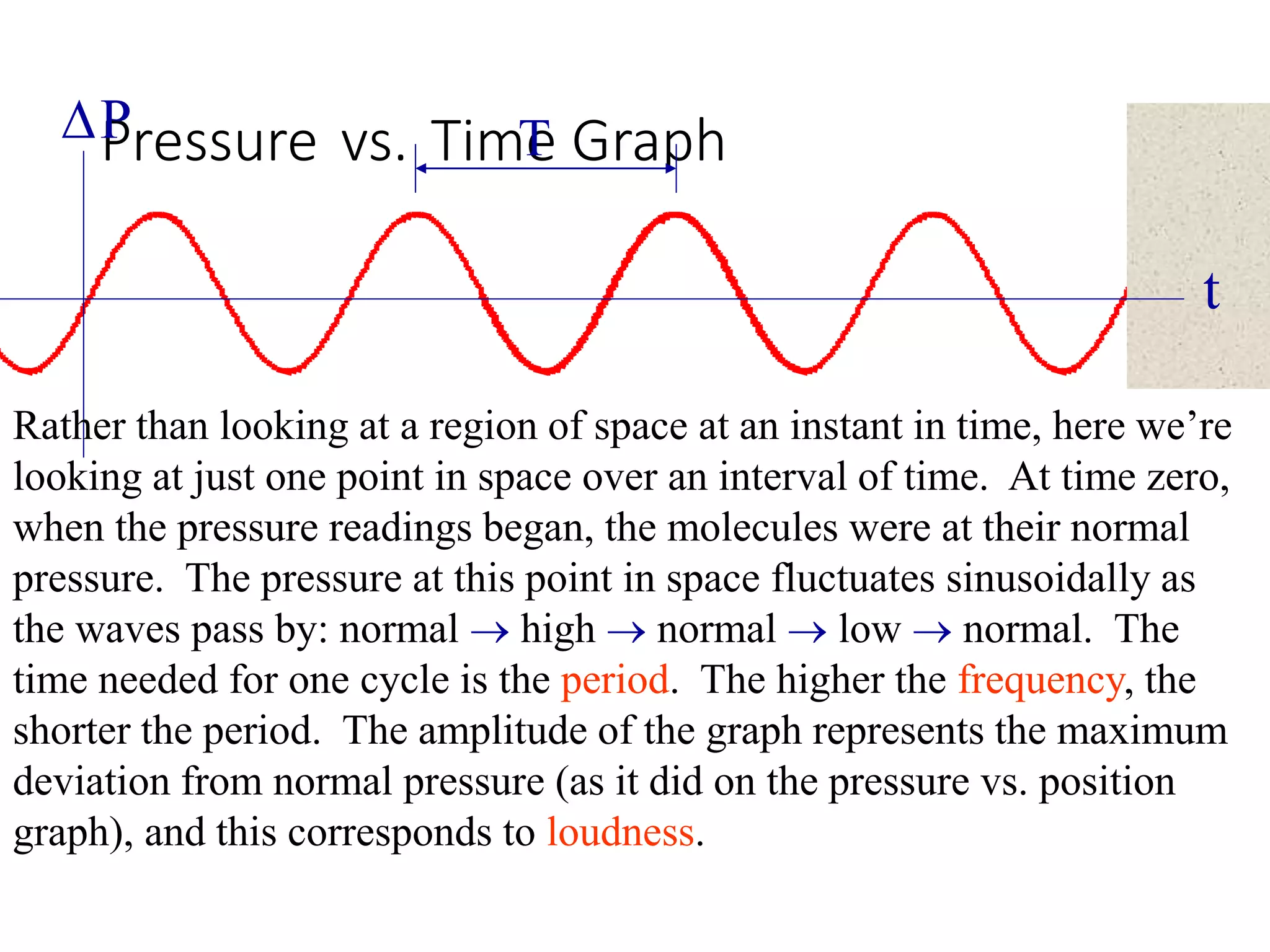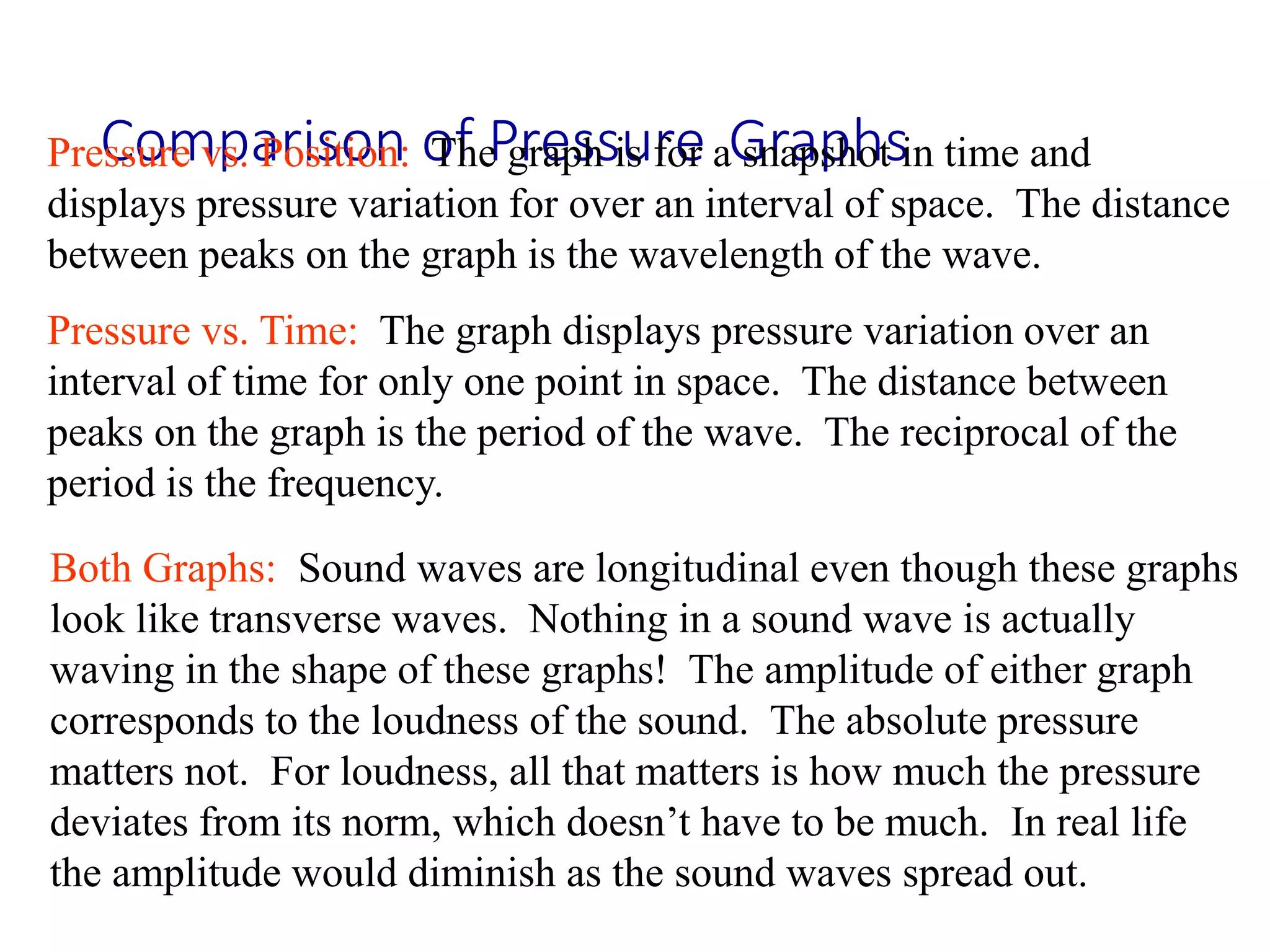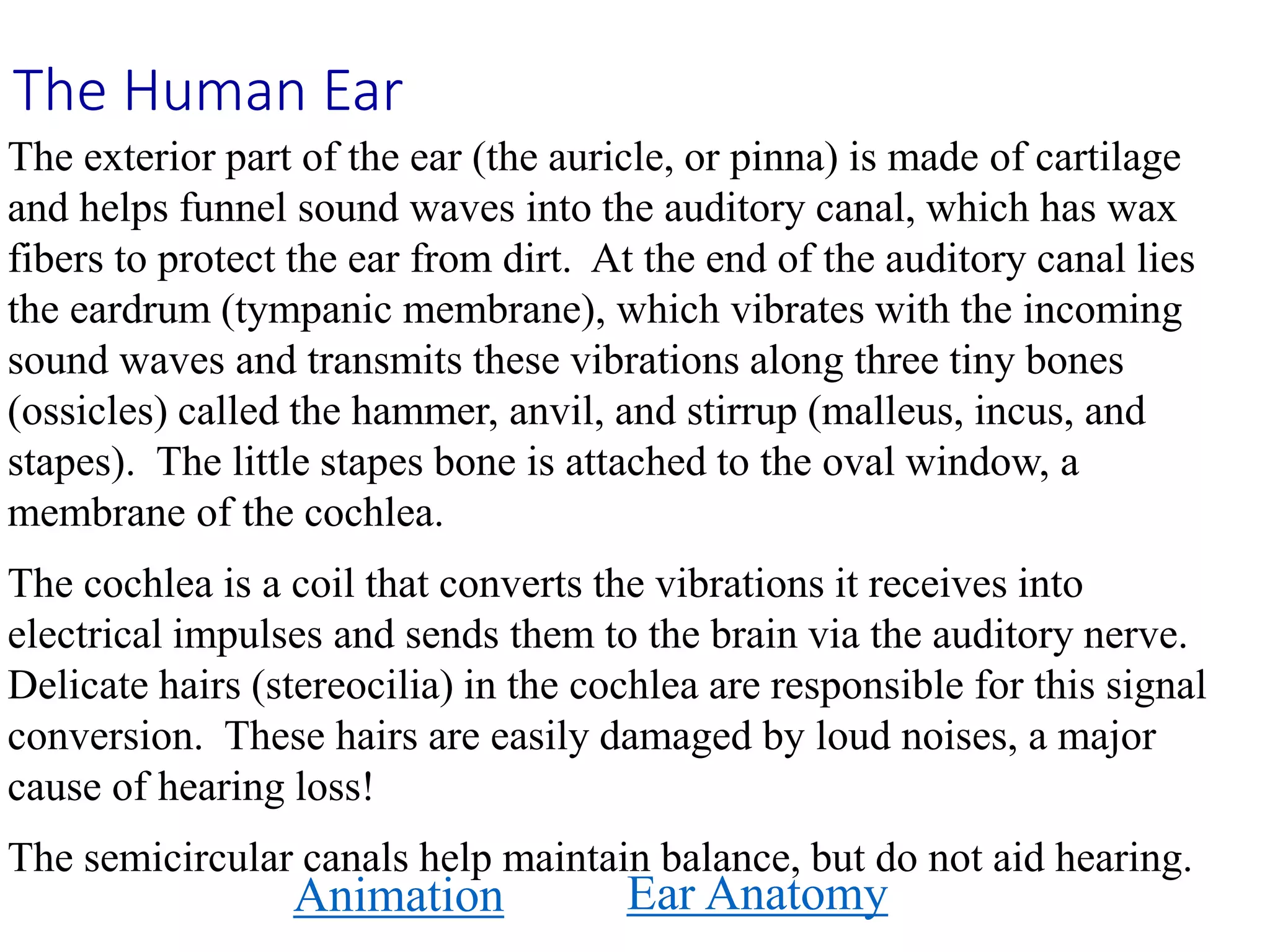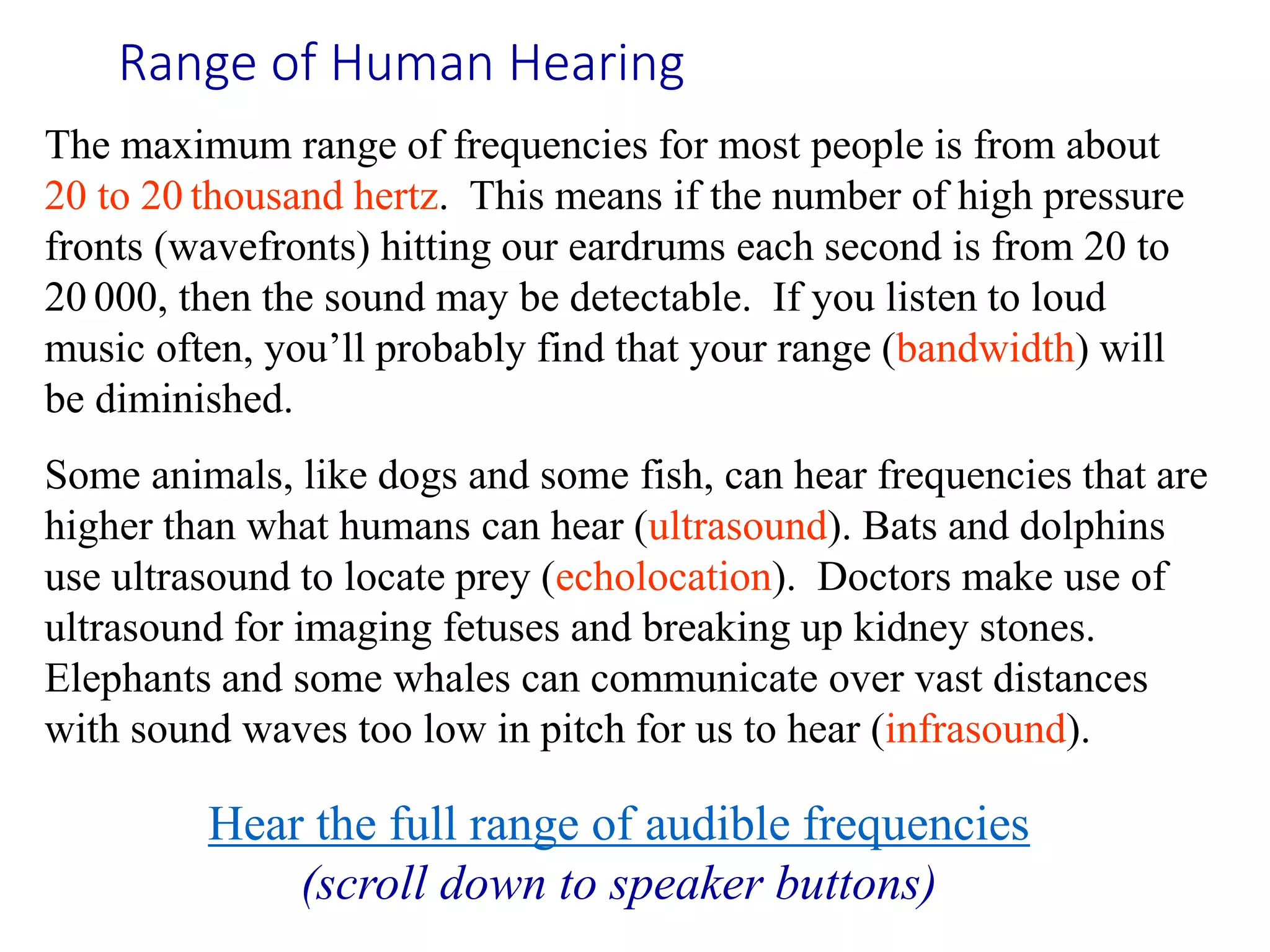This document provides information about sound waves and how they propagate. It discusses longitudinal waves, pressure variations in sound waves, factors that determine the speed of sound in different mediums, wavefronts, frequency and pitch, how the human ear detects sound, and the range of human hearing. Examples of different speeds of sound in various materials like air, water, steel and glass are given.
